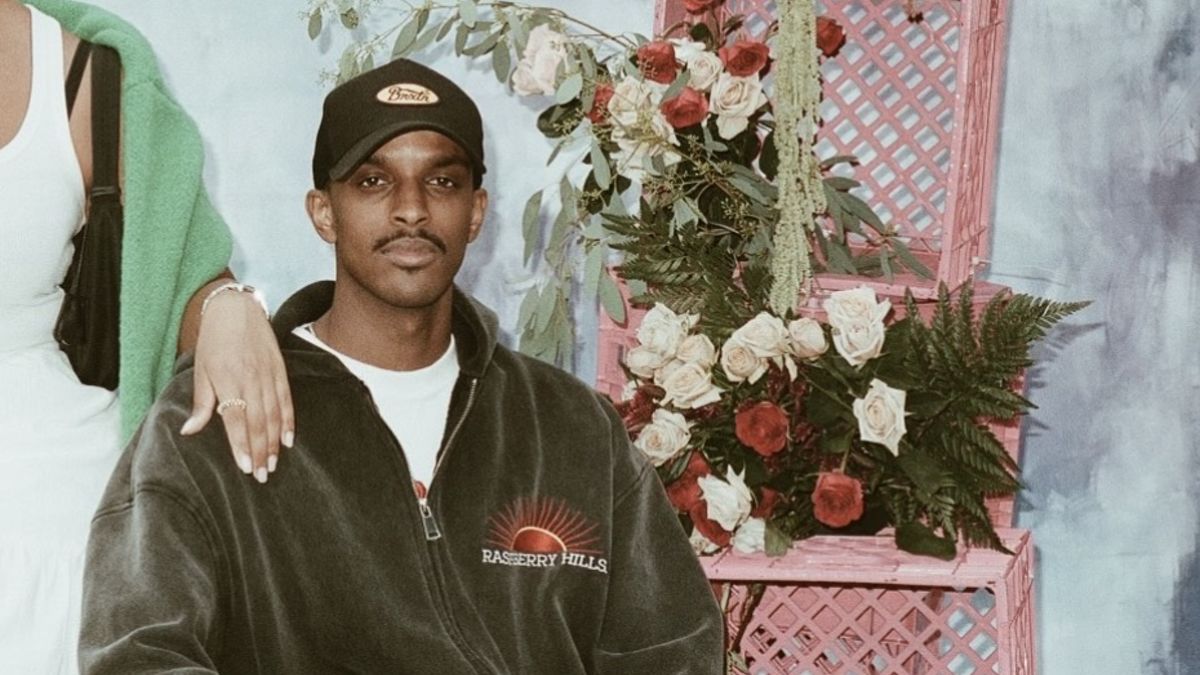Abdi Ibrahim: the full picture
Drawing inspiration from the stories of people around him, the self-taught Somali-American filmmaker/photographer brings human narratives to life through sublime vignettes spanning music videos, commercials, and branded content. From shooting on the streets of Seattle to directing for Apple, he tells us how he carved his own path in the industry.
“So I'm figuring it out as I'm going, trying to respect everybody's jobs, but when you don't know what people do on set, it's hard to communicate what you're asking for, or to know who to ask, you know?”
For most people, the idea of stepping on set of your first-ever commercial shoot to realise you don’t know what anyone else is doing, or who to ask for help, would induce a level of anxiety similar to those dreams where you turn up to a job interview totally unprepared, only to realise that you're naked.
The stories of the people around me inspired me a lot. Where I grew up is a big part of my identity. So that naturally seeps into the work.
But, at just 25, self-taught photographer and filmmaker Abdi Ibrahim (now repped by new—land) handled the task with the same curiosity, confidence, and creative vision that inspired him to pick up a camera at 15. Listening, communicating, and learning on the job, Ibrahim and co-director Jonathan Salmon helmed their soulful visual poem Nourishment & Resilience for Apple Music. Not a bad way to kick off a career.
Credits
powered by
-
- Production Company Happy Place
- Director Abdi Ibrahim
-
-
Unlock full credits and more with a Source + shots membership.
Credits
powered by
- Production Company Happy Place
- Director Abdi Ibrahim
- Creative Producer Tara Razavi
- Producer Jared Fassler
- Creative Director Rohan Blair-Mangat
- Producer Carlos Lopes
- Producer Jonathan Salmon
- DP Ben Mullen / (DP)
- Sound Designer Valdemar Huguet
- Post Producer Tony Stackhouse
- Color Producer Joey Fitzsimmons
- Editor Daniel Luna / (Editor)
- Colorist Houmam Abdallah | (Colorist)
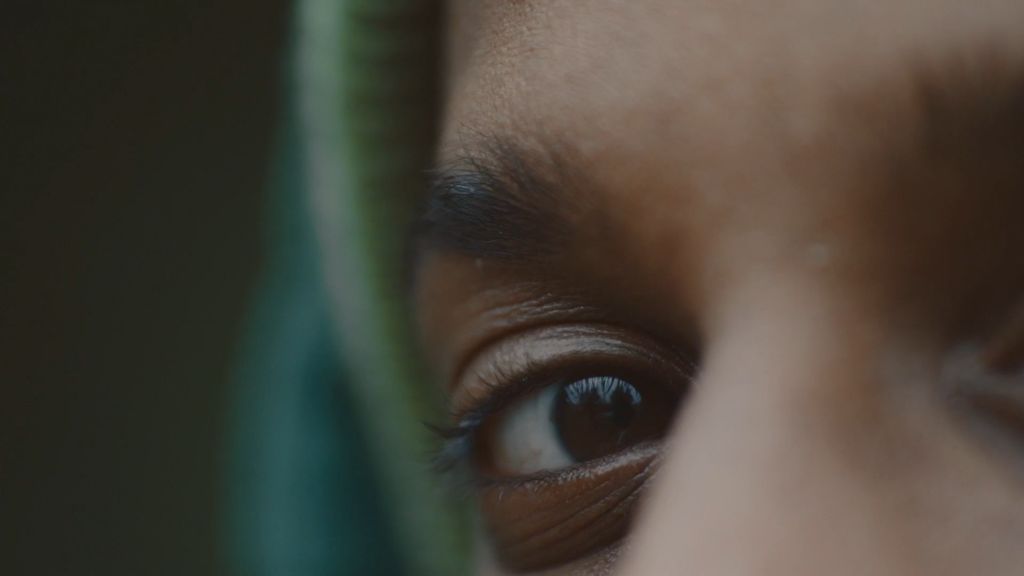
Credits
powered by
- Production Company Happy Place
- Director Abdi Ibrahim
- Creative Producer Tara Razavi
- Producer Jared Fassler
- Creative Director Rohan Blair-Mangat
- Producer Carlos Lopes
- Producer Jonathan Salmon
- DP Ben Mullen / (DP)
- Sound Designer Valdemar Huguet
- Post Producer Tony Stackhouse
- Color Producer Joey Fitzsimmons
- Editor Daniel Luna / (Editor)
- Colorist Houmam Abdallah | (Colorist)
Created for Black History Month, Nourishment & Resilience was part of a series commissioned by Apple Music from rising Black directors, exploring the four most important threads that make up the tapestry of Black lives and culture. From the very first shot, Ibrahim's distinctive style of storytelling through pictures becomes apparent, as he weaves rich human narratives through thoughtfully-composed vignettes, portraying agriculture as a powerful form of healing, resistance, and reconnection for Black individuals.
Despite growing up with limited resources to learn about directing, visual storytelling became an important form of self expression for teenage Ibrahim, and for what his hometown of Seattle lacked in educational opportunities, it certainly made up for in inspiration.
It's cool to work for Apple, or Nike, but it starts with your own work. You have to create your own visual language and keep your creative juices flowing all the time.
“I was out there, just playing around and shooting my brother, my sister, my cousins,” he explained. “I always wanted to get into filmmaking, but I didn't really know how to start.” Armed with a small film camera, friends and family became the subjects of his projects, often set against the streets of his Washington stomping grounds.
After taking a break from school, he decided to focus all of his energy on his creative work. “I was going to school for all this other stuff, but I always loved shooting. I always had a camera with me. So I took a break from school, and went 100% into photography and trying to become a filmmaker”. He later moved to Los Angeles in 2019 with Salmon, a friend with whom he formed a directing duo after shooting a short together in Seattle.
Credits
powered by
-
-
- Director Abdi Ibrahim
-
-
Unlock full credits and more with a Source + shots membership.
Credits
powered by
- Director Abdi Ibrahim
- Director Jonathan Salmon
- Creative Director Jesse Boykins III
- Executive Producer Joshua Kissi
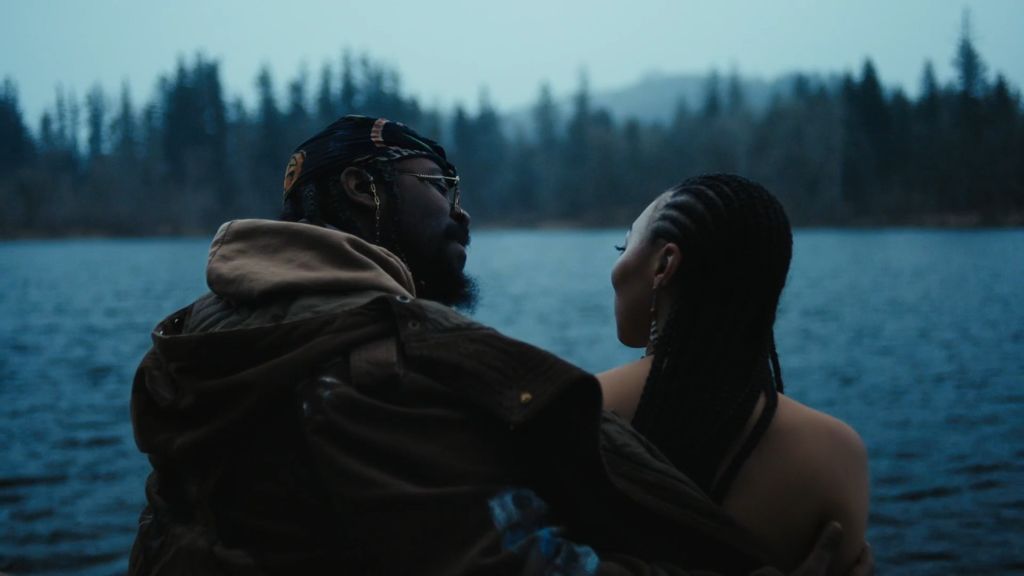
Credits
powered by
- Director Abdi Ibrahim
- Director Jonathan Salmon
- Creative Director Jesse Boykins III
- Executive Producer Joshua Kissi
It’s no surprise then, that the building blocks of his portfolio were music videos created in collaboration with friends and local musicians, with little to no budget. “I think doing shoots like that, making short films with your friends and making music videos for local artists, is so important. It’s not just practise, but work that you can use to get more work in the future.” His first big commercial music video, for American rapper Vince Staples, being a case in point.
Although much of his inspiration comes from music and films, City of God being a firm favourite, photography and human stories are the driving force behind his creative visions. “As I got older, the stories of the people around me inspired me a lot. Where I grew up is a big part of my identity. So that naturally seeps into the work".
Even understanding how treatments work, or how a deck is made. That's something that I wouldn’t have even thought to look up, I wouldn't have known who to ask or where to see one
Whether he’s taking pictures to visualise future films, or drawing inspiration from past work to pitch a new project, it's clear that photography wasn’t just a gateway to moving image for Ibrahim, but a rich and nourishing ground within which his filmmaking roots are deeply and intentionally bedded.
“I'll be making a treatment or writing something, and the first thing that I think of is work that I already have. It's an easy form of inspiration, like a cheat code of references. A lot of times I'll take photos when I have a film in mind that I can’t shoot right now. I'll make stills and scenes from it, and then use that to make it into film. It works both ways.”
Credits
powered by
-
-
- Director Abdi Ibrahim
-
-
Unlock full credits and more with a Source + shots membership.
Credits
powered by
- Director Abdi Ibrahim
- Director Jonathan Salmon
- DP Justin McWilliams

Credits
powered by
- Director Abdi Ibrahim
- Director Jonathan Salmon
- DP Justin McWilliams
The duo’s lucky break came in the form of a connection with a UK-based filmmaker, Rohan Blair-Mangat, who was visiting LA at the time. Rohan was creative directing Apple Music’s Black History Month campaign, and reached out to Ibraham and Salmon as rising Black directors. “Jonathan I formed a relationship with Rohan. He was helping us out, just kind of mentoring us at the time. He gave us some free game on how to pitch things, and how to get into the commercial world. And then he suggested that I direct one of the films.”
Every set I've been on after that shoot for Apple Music, I learn something new. The learning never stopped. But definitely the first time was everything, all at once
Ibrahim’s talent for capturing colourful human narratives translated effortlessly into his commercial work, no matter the theme. His upbeat Lacoste campaign, I Wanna Be Like Venus, being an excellent example.
Credits
powered by
- Agency BETC/Paris
- Production Company Kitten
- Director Abdi Ibrahim
-
-
Unlock full credits and more with a Source + shots membership.
Credits
powered by
- Agency BETC/Paris
- Production Company Kitten
- Director Abdi Ibrahim
- Sound GUM/Paris
- Creative Director Florence Bellisson
- Copywriter Antoine Gauquelin
- Art Director Agnes Cavard
- Assistant Art Director Joachim Touitou
- Producer Caroline Bouillet
- Music Creative Director Adam Ghoubali
- Song "Apache (Jump On It)" The Sugarhill Gang
- Talent Venus Williams
- Director Jon Salmon
- Post Producer Ines Brianceau
- Post Producer Valerie Kula
- Post Producer Nathalie Le Gal

Credits
powered by
- Agency BETC/Paris
- Production Company Kitten
- Director Abdi Ibrahim
- Sound GUM/Paris
- Creative Director Florence Bellisson
- Copywriter Antoine Gauquelin
- Art Director Agnes Cavard
- Assistant Art Director Joachim Touitou
- Producer Caroline Bouillet
- Music Creative Director Adam Ghoubali
- Song "Apache (Jump On It)" The Sugarhill Gang
- Talent Venus Williams
- Director Jon Salmon
- Post Producer Ines Brianceau
- Post Producer Valerie Kula
- Post Producer Nathalie Le Gal
Co-directed by Ibrahim and Salmon, the creative centres around an uplifting chance encounter between a young girl and tennis champion Venus Williams. It captures a moment of joyful complicity, where the two realise they have the same piece of clothing bearing the Lacoste crocodile, which leads to a dancing battle.
I loved all of the work they were creating. All of the directors on the roster had completely unique styles, but new-land has a very specific look and feel.
In just 30 seconds, Ibrahim packs vibrant compositions and contemporary street fashion into thoughtfully curated shots to capture a small town neighbourhood and its community.
Handling both cameras and human stories with skill and sensitivity was something that came naturally to the young director, yet he expressed how his first step into commercial filmmaking, especially filming for Apple Music, unveiled the disparities between entering the industry as a relevantly-educated director, and a self-taught one.
Credits
powered by
-
-
- Director Abdi Ibrahim
-
-
Unlock full credits and more with a Source + shots membership.
Credits
powered by
- Director Abdi Ibrahim
- DP Adam Linssen
- Creative Director Adam Ammanuel

Credits
powered by
- Director Abdi Ibrahim
- DP Adam Linssen
- Creative Director Adam Ammanuel
“There's only so much research available. I understood the really intricate, creative aspects, like compositions and colours and cameras,” he explains, referencing his Apple Music shoot. “But some stuff is impossible to research. You just have to experience it, like learning how to talk to certain department heads, and understanding what certain people do on set.”
Whether you're at the beginning, the middle or the end of your career, making your own work is the most important thing.
Ibrahim found himself learning new skills and set etiquette as he went along. “Even understanding how treatments work, or how a deck is made. That's something that I wouldn’t have even thought to look up, I wouldn't have known who to ask or where to see one”. Yet, without attending film school, Ibrahim was able to focus solely on harnessing the full potential of his camera and subjects with the resources available to him during his formative years, developing a truly authentic voice and visual style which he could later supplement with real-life experience.
“Every set I've been on after that shoot for Apple Music, I learn something new. And maybe I'll learn by making a mistake, or having to ask somebody. The learning never stopped. But definitely the first time was everything, all at once.”
Credits
powered by
- Agency 72andSunny/Los Angeles
-
- Director Abdi Ibrahim
-
-
Unlock full credits and more with a Source + shots membership.
Credits
powered by
- Agency 72andSunny/Los Angeles
- Director Abdi Ibrahim
- DP Chris Hadland
- Producer Geoff Walker
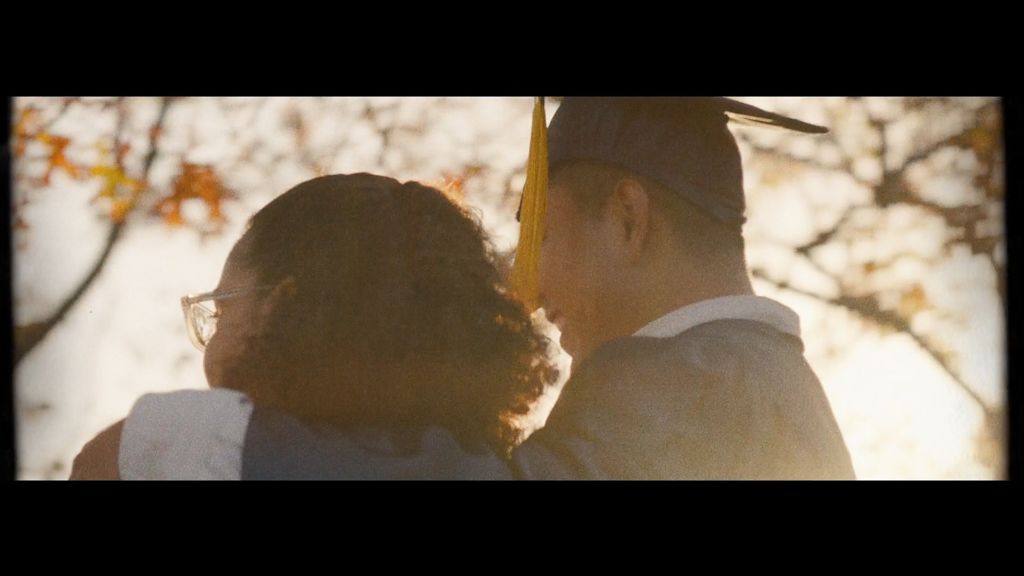
Credits
powered by
- Agency 72andSunny/Los Angeles
- Director Abdi Ibrahim
- DP Chris Hadland
- Producer Geoff Walker
New-land entered Ibrahim’s radar when a fellow filmmaking friend, Amara, first signed with them. “I loved all of the work they were creating. All of the directors on the roster had completely unique styles, but new-land has a very specific look and feel.” Inspired by the diversity of their directors, clients, and cohesive visual language, he reached out to the production company, and after a few trips to London joined their roster.
I think brands, and film studios, would benefit from being more open to letting the 21 year old from somewhere-over-there tell their story.
Having found his feet firmly grounded in the commercial industry, what advice would Ibrahim give a young creator in a similar position to his own? “Whether you're at the beginning, the middle or the end of your career, making your own work is the most important thing," he emphasises. "That's where you learn the most. It's cool to work for Apple, or Nike, but it starts with your own work. You have to create your own visual language and keep your creative juices flowing all the time.”
Reflecting on how the industry has changed in even his short experience, he highlights how the rise of the internet and social media has allowed more autonomy for young filmmaker. “I've seen kids from back home, from the super outskirts of Seattle, creating spec shoots with their friends with little cameras, putting it on YouTube, putting it on a website, putting it on Instagram or something, and pitching it out to people,” he says.
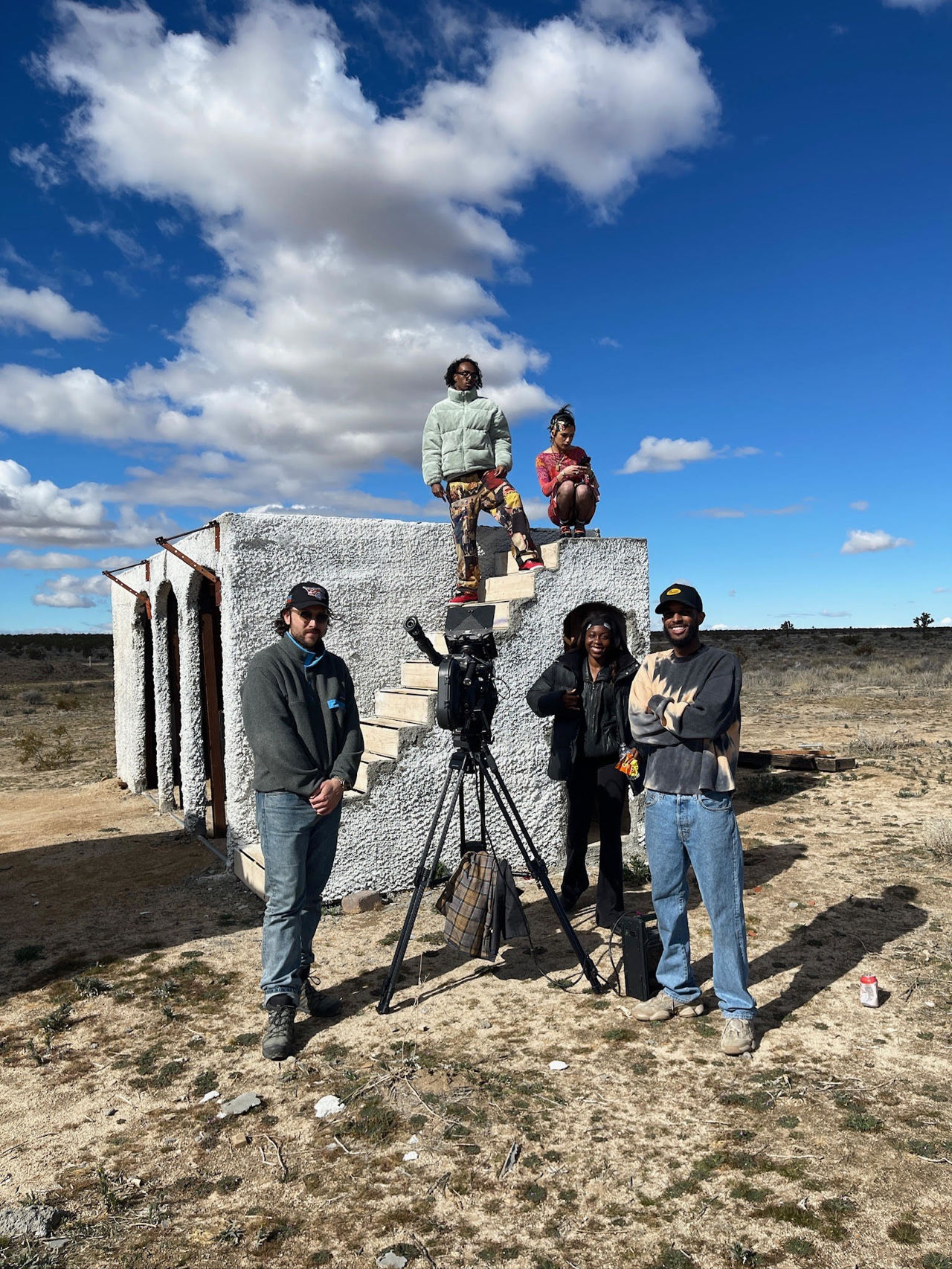
Conversely, he alludes to how it has stayed the same in many ways, commenting on the importance of allowing new voices to be heard. “LA is a big city, but I see the same directors and actors working on the same things. I think brands, and film studios, would benefit from being more open to letting the 21-year-old from somewhere-over-there tell their story.”
Despite being a perfect example of how perseverance, prolific creativity, and putting yourself out there can lead a young filmmaker from the outskirts of Seattle to the sets of LA, Ibrahim affirms how opportunities for non-film school graduates are still few and far between, not for a lack of creatives - such as Blair-Mangat - who are willing to share their knowledge, but an absence of schemes to connect them.
Having recently signed with new-land in Scandinavia, and eager to focus on his first love of narrative and feature length films, Ibrahim’s upcoming year is set to be a busy one of creating art, making new connections, and adding to the rich repository of experiences and human connections he’ll bring to his future work.
)
















